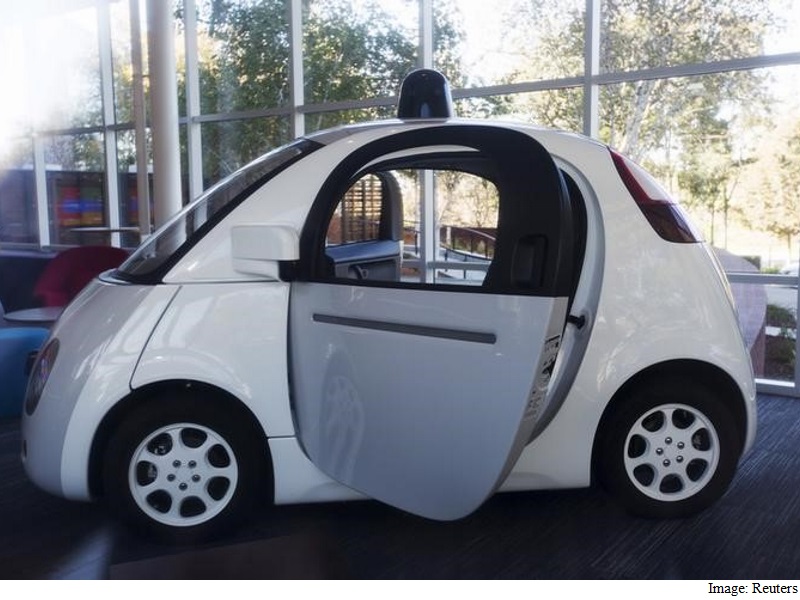- Home
- Others
- Others News
- A Small, Self Governing Island May Hand Over Its Roads to Self Driving Cars
A Small, Self-Governing Island May Hand Over Its Roads to Self-Driving Cars

First, he's trying to salvage the island's horse-drawn carriages that date to 1876. At the same time, Gawne is leading a project to potentially lure companies that make fully self-driving cars, vehicles without steering wheels or pedals.
Such is the life of a bureaucrat on one of the world's most unusual islands. The self-governing island - nestled between Ireland and Britain - has a population close to 90,000 and a land mass about the size of Chicago. It claims to have the oldest continuous parliament in the world, dating back more than 1,000 years.
Its reliance on tourism dictates keeping the horse carriage in business. Driverless cars probably would draw visitors, too, and the government's ability to move quickly given its small size could make it an appealing destination for companies developing such vehicles.
"We like to be innovative on the island," Gawne said. "We like also to be independent. This helps both those areas in terms of our international image and reputation."
Gawne said the government has had discussions with multiple companies interested in bringing driverless cars to the island. Any needed adjustments to the island's laws could be finished by early summer, a speedy timeline compared to the pace of larger countries, which at times have drawn criticism from the companies developing autonomous vehicles.
For some, a small island - far from the lumbering bureaucracies and swarming cities of large nations - would be an obvious launching point for the first large-scale public trials of fully autonomous vehicles.
"Things can be tried on an island that may not be practical in a city," said David Alexander, an analyst at Navigant Research. "On the mainland there will always be someone who wants to go beyond the range of the trial and will then proclaim how useless autonomous cars are."
He added that s mall island nations generally can't afford new transit systems on their own. A big company willing to invest in the local infrastructure would probably find a willing government, Alexander said.
The Isle of Man's government has set up a group to weigh the merits of the technology and determine what laws need changed and what incentives would attract companies, be it office space or warehouses. The effort, which Gawne describes as "fairly urgent," will be finalized within a month. Gawne says any new regulations could then be pushed through in two or three months. He anticipates broad support in the government.
"We're very keen. We can see a lot of potential advantages for the island," he said. "It also helps in terms of the image of Isle of Man."
But others caution that launching self-driving cars on a small island would not convince people around the world that the technology is trustworthy. Thilo Koslowski, an autonomous-vehicle analyst at Gartner, expects that once companies are ready to release fully self-driving cars - a step he says isn't imminent - they'll want to unleash them first in a bustling mainland city.
"That will be the proof in the pudding, to show these technologies are reliable in a real-world environment where most people would come to see those cars," Koslowski said.
Bryant Walker Smith, a law professor at the University of South Carolina, cautions that locations that want to court driverless cars should move carefully.
"One of the public misconceptions about this field is that a state that passed a law on autonomous driving must be ahead. It must be signaling it's friendly for this kind of development," Smith said. "That has not been the case."
In 2015 Google expanded its tests of self-driving cars to Austin, despite Texas not having passed legislation on autonomous cars.
Smith describes new state laws in the United States dealing with autonomous cars as superficial because many of them don't address key issues. For example, can cars be built to flout laws like human drivers do, such as speeding and crossing double yellow lines in some situations?
There's also the lingering question of how to determine an appropriate safety standard for driverless cars, Smith said.
So although the cars may eventually be an option for the Isle of Man, it should probably make sure to keep that horse-drawn carriage service running for now.
© 2016 The Washington Post
Catch the latest from the Consumer Electronics Show on Gadgets 360, at our CES 2026 hub.
Related Stories
- Samsung Galaxy Unpacked 2025
- ChatGPT
- Redmi Note 14 Pro+
- iPhone 16
- Apple Vision Pro
- Oneplus 12
- OnePlus Nord CE 3 Lite 5G
- iPhone 13
- Xiaomi 14 Pro
- Oppo Find N3
- Tecno Spark Go (2023)
- Realme V30
- Best Phones Under 25000
- Samsung Galaxy S24 Series
- Cryptocurrency
- iQoo 12
- Samsung Galaxy S24 Ultra
- Giottus
- Samsung Galaxy Z Flip 5
- Apple 'Scary Fast'
- Housefull 5
- GoPro Hero 12 Black Review
- Invincible Season 2
- JioGlass
- HD Ready TV
- Laptop Under 50000
- Smartwatch Under 10000
- Latest Mobile Phones
- Compare Phones
- OPPO Reno 15 Pro Max
- Honor Win RT
- Honor Win
- Xiaomi 17 Ultra Leica Edition
- Xiaomi 17 Ultra
- Huawei Nova 15
- Huawei Nova 15 Pro
- Huawei Nova 15 Ultra
- Asus ProArt P16
- MacBook Pro 14-inch (M5, 2025)
- OPPO Pad Air 5
- Huawei MatePad 11.5 (2026)
- Xiaomi Watch 5
- Huawei Watch 10th Anniversary Edition
- Acerpure Nitro Z Series 100-inch QLED TV
- Samsung 43 Inch LED Ultra HD (4K) Smart TV (UA43UE81AFULXL)
- Asus ROG Ally
- Nintendo Switch Lite
- Haier 1.6 Ton 5 Star Inverter Split AC (HSU19G-MZAID5BN-INV)
- Haier 1.6 Ton 5 Star Inverter Split AC (HSU19G-MZAIM5BN-INV)

















